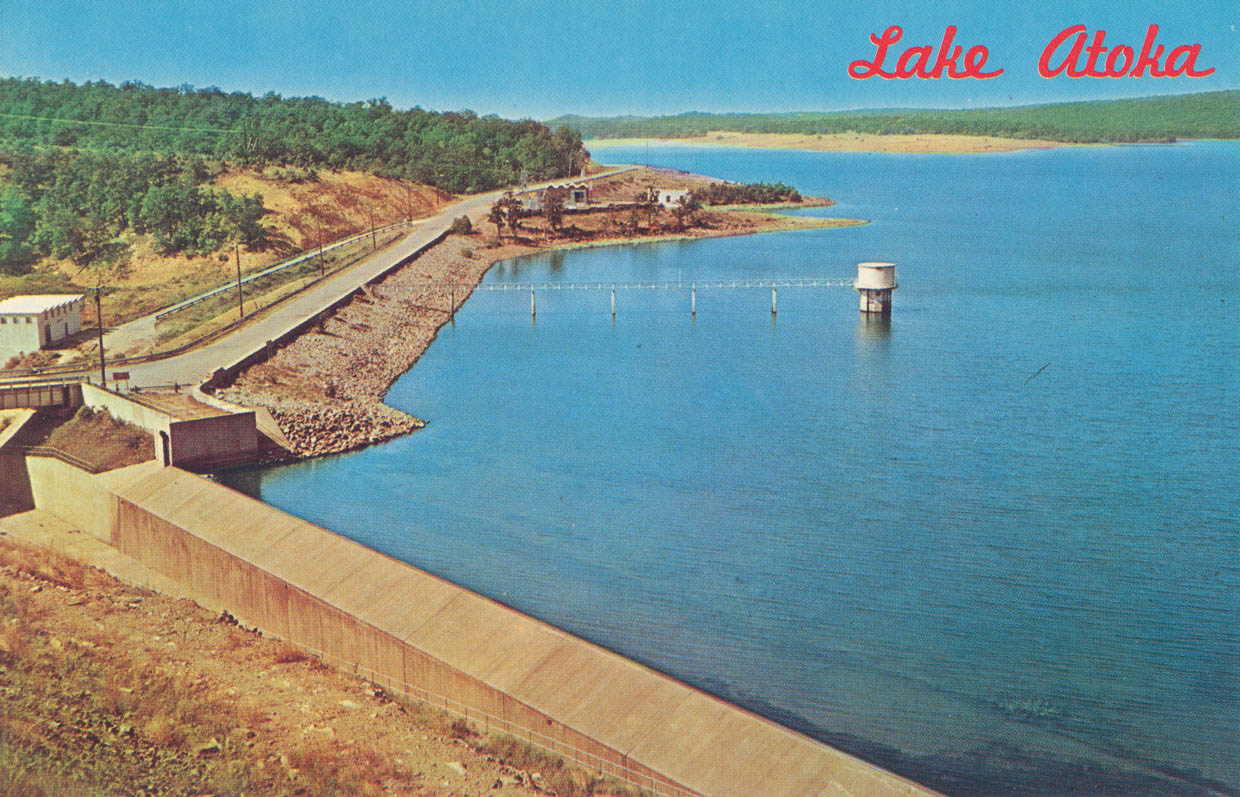
A postcard of Lake Atoka, a municipal reservoir built in 1964, the peak year for reservoir construction in Oklahoma.
Oklahoma Historical Society


A postcard of Lake Atoka, a municipal reservoir built in 1964, the peak year for reservoir construction in Oklahoma.
Oklahoma Historical Society

Oklahoma Historical Society
A postcard of Lake Atoka, a municipal reservoir built in 1964, the peak year for reservoir construction in Oklahoma.
The architects of the state’s golden age of reservoir construction, Governor Robert S. Kerr and U.S. Rep. Carl Albert, lived in an Oklahoma crippled with drought and choked by its own soil.
The Dust Bowl played a prominent role in both men’s push for more reservoir construction. But, surprisingly, another factor influenced the manmade lake boom: too much water.

Russell Lee / U.S. Farm Security Administration/Library of Congress
A sign erected in 1940 before Oklahoma City residents went to the polls to vote on the nature of their future water source and supply.
Wild fluctuations in water depth along the North Canadian and Arkansas Rivers were a mainstay during the 1920s.
Kerr, who grew up in Oklahoma, saw firsthand the devastating effects of regular flooding of the state’s rivers and streams. Albert’s experience growing up near McAlester was similar.
“They were part of the power elite and they could make things happen,” Ed Rossman of the U.S. Army Corps of Engineers’ Tulsa district says about Kerr and Albert’s influence on Oklahoma’s long-term water plan.
Fueled by direct experience with both kinds of extremes, Kerr and Albert were determined to “conquer” Oklahoma’s water extremes.

Joe Wertz / Source: Oklahoma Water Resources Board
New reservoir construction in Oklahoma peaked in 1964. Oklahoma's newest reservoir was built in 1997.
Oklahoma has more than 100 major reservoirs, and construction swelled between the 1930s and 1970s. Seven new reservoirs were built at the peak in 1964. The majority are owned by cities, towns and other municipalities, and were built to secure water supplies for residents and businesses.
But “flood control” was a major consideration in the construction of about half of Oklahoma’s reservoirs, data from the Oklahoma Water Resources Board and the U.S. Army Corps of Engineers show.
“Oklahoma had some big water resource needs dating back to the 20s, during the floods, and then during the Dust Bowl, in terms of water availability,” Rossman says. “Kind of both extremes.”